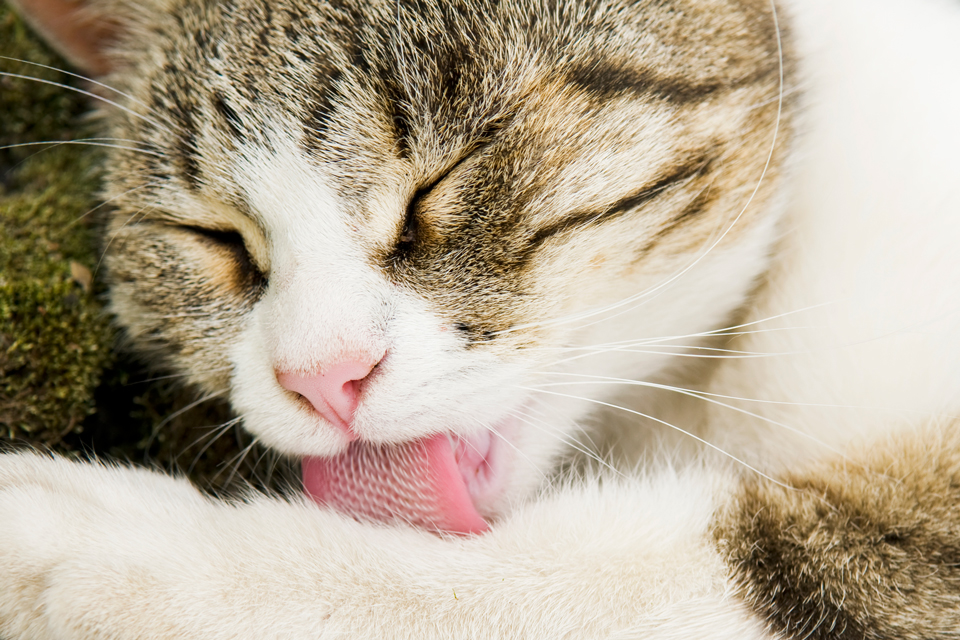Skin Infections in Cats

Cats can get skin infections as primary conditions, but more often, they are secondary to some other disease process.
Skin infections in cats are caused by many different types of bacteria and yeast. Typically, these are organisms that are present on the skin in small numbers all the time without causing harm but for some reason, they suddenly drastically increase and a cause problem.
Signs of Skin Infections in Cats
A cat with a skin infection may show one or all of the following signs:
- Excessive licking or chewing at one or more areas of the skin
- Hair loss, either generally or excessively in one spot
- Raised bumps on the skin
-
Reddened skin
- Increased hairball vomiting
- Foul odor to the skin
Diagnosis of Feline Skin Infections
If you see any of the above signs in your cat, it's time to visit the veterinarian. Not doing so can lead to a painful, medication-resistant infection or even the development of an OCD-type licking behavior. When you take your cat to the veterinarian, he or she will ask you a lot of questions about what you've noticed and when and will do a thorough physical examination.
To help diagnose which organisms might be involved in the skin infection, the doctor may do a skin cytology test. Discovering which organisms are involved will help the veterinarian decide on an appropriate treatment. He or she may perform other skin related tests, as well, to look for an underlying thing that might have triggered the skin infection. Those tests can include:
- Skin scraping
- Fungal culture
- Culture and sensitivity
- Blacklight test
Skin Infections in Cats Are Often Secondary
Primary skin infections in cats are rare. They can, however, occur, most often when a cat is bathed and not dried well afterward.
Other conditions which can result in secondary skin infections include:
In these cases, the primary disease process must be diagnosed and treated along with the secondary skin infection.
Treatment of Skin Infections in Cats
Treatment of the skin infection itself may include topical application of creams or ointments, injectable or oral antibacterial or antifungal medications, medicated shampoos, or a combination of those. If the skin infection is secondary to another condition, that primary condition will have its own treatments, which vary.
You May Also Like These Articles:
Flea Allergy Dermatitis in Cats
Common Causes of Ear Problems in Cats
Flea Allergy Dermatitis in Cats




